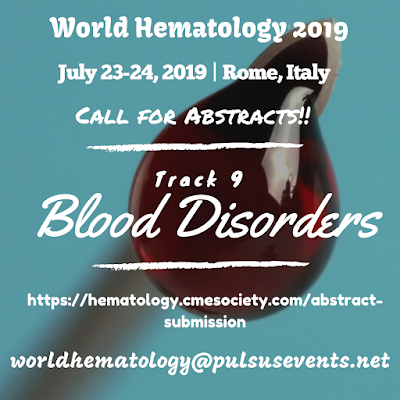Blood is a living tissue which consists of liquid and solid. The liquid part is plasma containing water, salts and protein and the solid part containing red blood cells, white blood cells and platelets. Blood disorders affect one or more parts of the blood and can be acute or chronic. Many blood disorders are also inherited. Haemophilia A is a genetic disorder with the deficiency of clotting factor VIII. The second-most common form of haemophilia is Hemophilia B, a blood clotting disorder caused by mutation of the factor IX gene, leading to deficiency in its factor IX. Rare haemophilia is Hemophilia C which affects both male and female. However, it most commonly occurs in Jews of Ashkenazi descendants which is also most famously known as fourth coagulation disorder after von Willebrand's disease and haemophilia A and B.
In USA, it is thought to affect 1 in 100,000 of the adult population. Idiopathic thrombocytopenic purpura (ITP) is defined as isolated low platelet count (thrombocytopenia) with normal bone marrow and absence of other causes of thrombocytopenia. It is also known as immune thrombocytopenia or primary immune thrombocytopenia or primary immune thrombocytopenic purpura or autoimmune thrombocytopenic purpura. The most common disease described in humans is Von Willebrand disease which is a hereditary coagulation abnormality. Platelets are also known as "thrombocytes" and its function (along with the coagulation factors) is to stop bleeding by clumping and clogging blood preventing blood vessel injuries.
Explore more about Hematology at World Hematology 2019. Do submit your abstracts on this track at: https://hematology.cmesociety.com/abstract-submission
We do provide exciting offers on group registrations. Join us with a group and avail special offers!!
For more information, Please Contact: Vijaya | Program Manager | worldhematology@pulsusevents.net
In USA, it is thought to affect 1 in 100,000 of the adult population. Idiopathic thrombocytopenic purpura (ITP) is defined as isolated low platelet count (thrombocytopenia) with normal bone marrow and absence of other causes of thrombocytopenia. It is also known as immune thrombocytopenia or primary immune thrombocytopenia or primary immune thrombocytopenic purpura or autoimmune thrombocytopenic purpura. The most common disease described in humans is Von Willebrand disease which is a hereditary coagulation abnormality. Platelets are also known as "thrombocytes" and its function (along with the coagulation factors) is to stop bleeding by clumping and clogging blood preventing blood vessel injuries.
Explore more about Hematology at World Hematology 2019. Do submit your abstracts on this track at: https://hematology.cmesociety.com/abstract-submission
We do provide exciting offers on group registrations. Join us with a group and avail special offers!!
For more information, Please Contact: Vijaya | Program Manager | worldhematology@pulsusevents.net

No comments:
Post a Comment